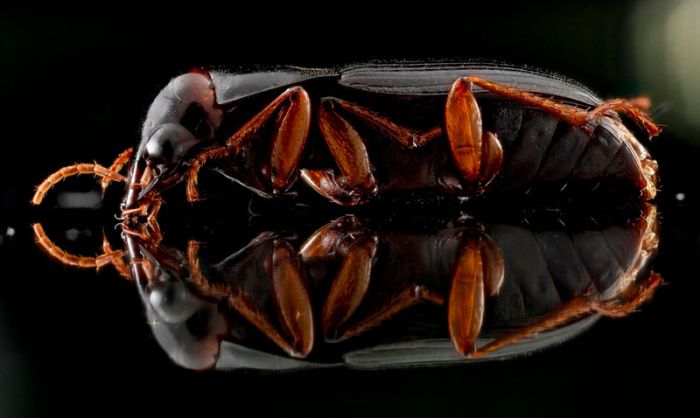|
|
Insect Macro Photography
|
Insects that show hemimetabolism, or incomplete metamorphosis, change gradually by undergoing a series of molts. An insect molts when it outgrows its exoskeleton, which does not stretch and would otherwise restrict the insect's growth. The molting process begins as the insect's epidermis secretes a new epicuticle. After this new epicuticle is secreted, the epidermis releases a mixture of enzymes that digests the endocuticle and thus detaches the old cuticle. When this stage is complete, the insect makes its body swell by taking in a large quantity of water or air, which makes the old cuticle split along predefined weaknesses where the old exocuticle was thinnest. Other arthropods have a much different process and only molt; though must accommodate for the difference in exoskeleton structure and make up with other enzymes.
Immature insects that go through incomplete metamorphosis are called nymphs or in the case of dragonflies and damselflies as naiads. Nymphs are similar in form to the adult except for the presence of wings, which are not developed until adulthood. With each molt, nymphs grow larger and become more similar in appearance to adult insects.
• Complete metamorphosis
Holometabolism, or complete metamorphosis, is where the insect changes all in four stages, an egg or embryo, a larva, a pupa, and the adult or imago. In these species, egg hatches to produce a larva, which is generally worm-like in form. This worm-like form can be one of several varieties: eruciform (caterpillar-like), scarabaeiform (grub-like), campodeiform (elongated, flattened, and active), elateriform (wireworm-like) or vermiform (maggot-like). The larva grows and eventually becomes a pupa, a stage marked by reduced movement and often sealed within a cocoon. There are three types of pupae: obtect, exarate or coarctate. Obtect pupae are compact, with the legs and other appendages enclosed. Exarate pupae have their legs and other appendages free and extended. Coarctate pupae develop inside the larval skin. Insects undergo considerable change in form during the pupal stage, and emerge as adults. Butterflies are a well known example of an insects that undergo complete metamorphosis, although most insects use this life cycle. Some insects have evolved this system to hypermetamorphosis.
|
|









